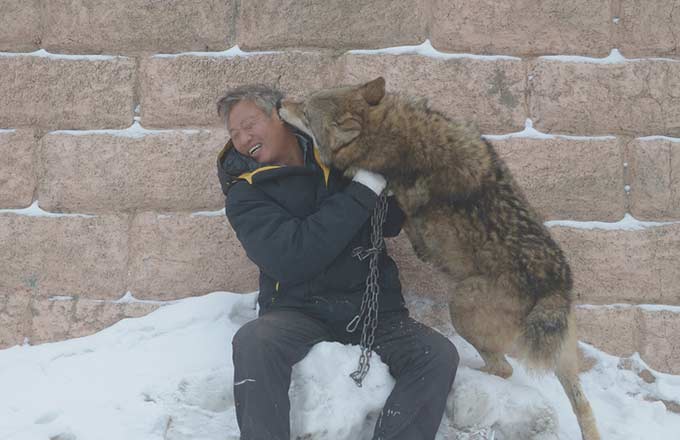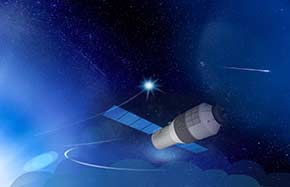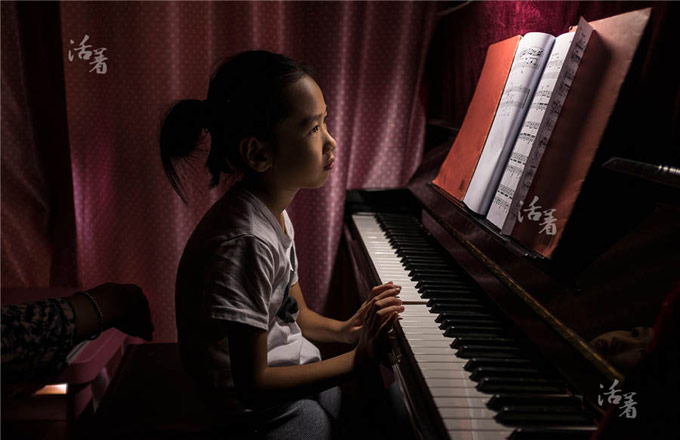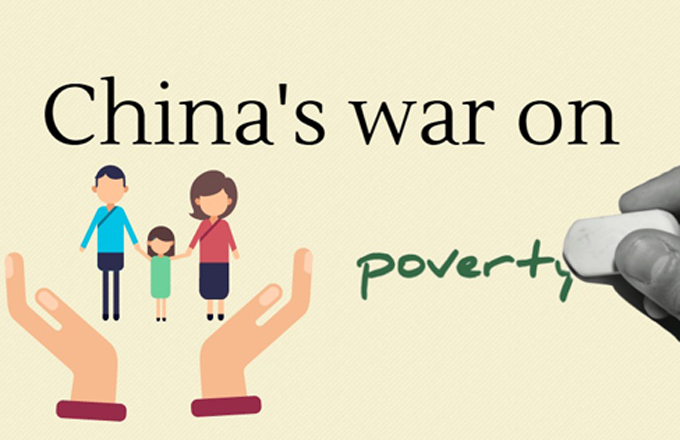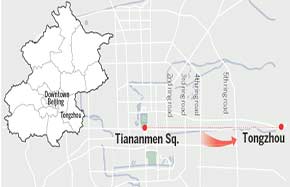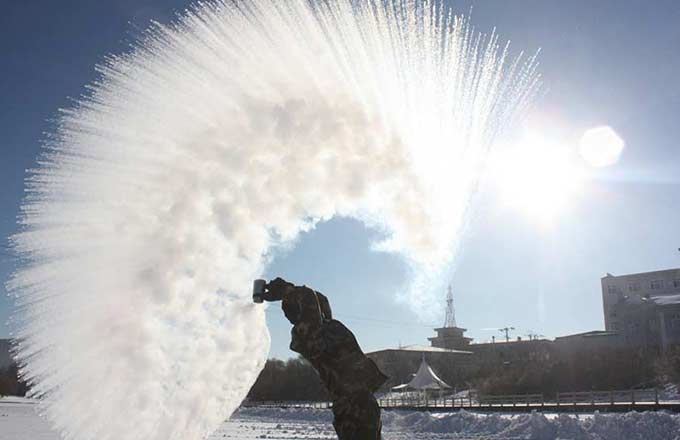Full text: Traditional Chinese Medicine in China
III. Carrying Forward the Tradition and Ensuring the Development of TCM
Establishment of a TCM medical care system covering both urban and rural areas. An urban TCM medical care network, mainly comprising hospitals for TCM (including ethnic minority medicine and integrated Chinese and Western medicine), TCM clinics and general hospitals' TCM clinical departments, and community health centers, has been formed. A rural TCM medical care network has been established, mainly composed of county-level TCM hospitals, TCM clinical departments of general hospitals (specialized hospitals and maternal & child health centers), TCM departments of township-level health centers, and village health clinics, which provides basic TCM healthcare services.
Statistics collected at the end of 2015 show that there were 3,966 TCM hospitals across the country, including 253 hospitals of ethnic minority medicine and 446 hospitals of integrated Chinese and Western medicine; there were 452,000 practitioners and assistant practitioners of TCM (including practitioners of ethnic minority medicine and integrated Chinese and Western medicine); there were 42,528 TCM clinics, including 550 for ethnic minority medicine and 7,706 for integrated medicine; there were 910 million visits that year to TCM medical and health service units across the country and 26,915,000 inpatients treated.
In addition to making contribution to the prevention and treatment of common, endemic and difficult diseases, TCM has played an important role in the prevention and treatment of major epidemics and medical relief in public emergencies and natural disasters. The contribution of TCM and integrated Chinese and Western medicine in treating SARS (severe acute respiratory syndrome) has been affirmed by the World Health Organization (WHO). TCM treatment of influenza A virus subtype H1N1 has yielded satisfactory results, arousing widespread attention in the international community. In addition, TCM has made distinctive contributions to the prevention and control of epidemics such as HIV/AIDS (Human Immunodeficiency Virus and Acquired Immune Deficiency Syndrome), HFMD (Hand, Foot and Mouth Disease), and Influenza A virus subtype H7N9 in humans, as well as to medical relief following the Wenchuan earthquake, the Zhouqu mudslide and other public emergencies and natural disasters.
Expedited development of TCM disease prevention and healthcare services. The system of TCM disease prevention and healthcare services has been expedited by establishing preventative healthcare departments at TCM hospitals at/above the second class and providing TCM preventative medical care services at community-level medical and health service institutions, maternal & child health centers and rehabilitation centers. Also seen is rapid growth in the number of privately run TCM healthcare institutions. Endeavor has been made to promote the development of TCM health services and carry out TCM health tourism and TCM integrated treatment and convalesce. TCM health management program has been incorporated as a separate category into the national basic public health service program, gradually releasing the potential and strengths of TCM in public health services, thus fostering a shift from treatment of serious diseases to comprehensive health management in the mode of health development.
Important role played by TCM in the reform of the medical care system. In the course of advancing the reform, TCM's distinct strengths, such as its clinical effectiveness, its unique role, flexible ways of treatment and relatively low cost in disease prevention and healthcare, have been fully exploited to augment benefits of reform for the people and enriched the connotation of China's basic medical care system with distinct characteristics. With relatively low cost, TCM has contributed rather a higher share of services in relation to the resources it is entitled to. The medical care services provided by TCM institutions in the national total increased from 14.3 percent to 15.7 percent in the few years from 2009 to 2015. In 2015, out-patient expenses per visit and in-patient expenses per capita at public TCM hospitals were, respectively, 11.5 percent and 24 percent lower than those at general public hospitals.
Building a distinctive system of training for TCM professionals. Training of professionals is essential for the development of TCM. Thus, great efforts have been made to promote development of education in TCM, basically putting in place a system of training for TCM professionals that features an organic link-up between college, graduate and continuing education, and run through master-apprenticeship training. This, together with a mechanism for training of practical TCM professionals geared toward the needs of the urban and rural communities that has also been initially established, forms a multi-dimensional education network covering multiple disciplines at different levels, including TCM, traditional Chinese pharmacology, integrated Chinese and Western medicine, and ethnic minority medicine at secondary and higher vocational schools, colleges, postgraduate and doctoral studies. By the end of 2015, there were throughout the country 42 institutions of higher learning in TCM (including 25 TCM colleges), and more than 200 Western medicine institutions of higher learning or non-medical higher learning institutions offering programs in TCM, enrolling in total as many as 752,000 students.
In the course of implementing the program of training professionals for inheritance and innovation in TCM, efforts have been made to conserve and disseminate the academic ideas and practical experience of the fifth batch of prominent TCM experts. By 2015, 1,016 studios had been set up for carrying forward their expertise; 200 studios had been set up for passing on the expertise of prominent TCM experts at the grassroots level; 64 studios had been established for promoting various schools of TCM.
TCM training programs targeted at professionals at both grassroots and higher levels have been held, such as training in TCM knowledge and skills for village doctors, training for conserving special traditional pharmacological skills, and advanced training for outstanding TCM clinical practitioners. Together, 124 researchers are finishing postdoctoral studies in TCM inheritance at the Chinese Academy of Chinese Medical Sciences and their work is being evaluated. Exploration has been made in establishing an incentive mechanism for outstanding TCM workers to come to the fore. By 2015, the title of TCM Master had been awarded to a total of 60 experts practicing TCM and ethnic minority medicine.
Positive progress made in TCM scientific research. Sixteen national TCM clinical research bases have been built as part of the clinical research system for preventing and treating infectious diseases and chronic non-infectious diseases with TCM. This, together with a number of key research centers and labs covering all disciplines of TCM and national engineering (technology) research centers and labs in this respect, have brought into being a TCM sci-tech innovation system that is based on independent TCM research institutes, TCM universities, and TCM hospitals at and above the provincial level, and participated by comprehensive universities, general hospitals and TCM enterprises.
In recent years, 45 TCM research achievements have been awarded national sci-tech prizes, of which five were first-prize winners of the National Science and Technology Progress Award. Tu Youyou won the 2011 Lasker Award in clinical medicine and the 2015 Nobel Prize in Physiology or Medicine for discovering qinghaosu (artemisinin). Wang Zhenyi and Chen Zhu were awarded the Seventh Annual Szent-Gyorgyi Prize for Progress in Cancer Research for combining the Western medicine ATRA and the TCM compound arsenic trioxide to treat acute promyelocytic leukemia (APL).





